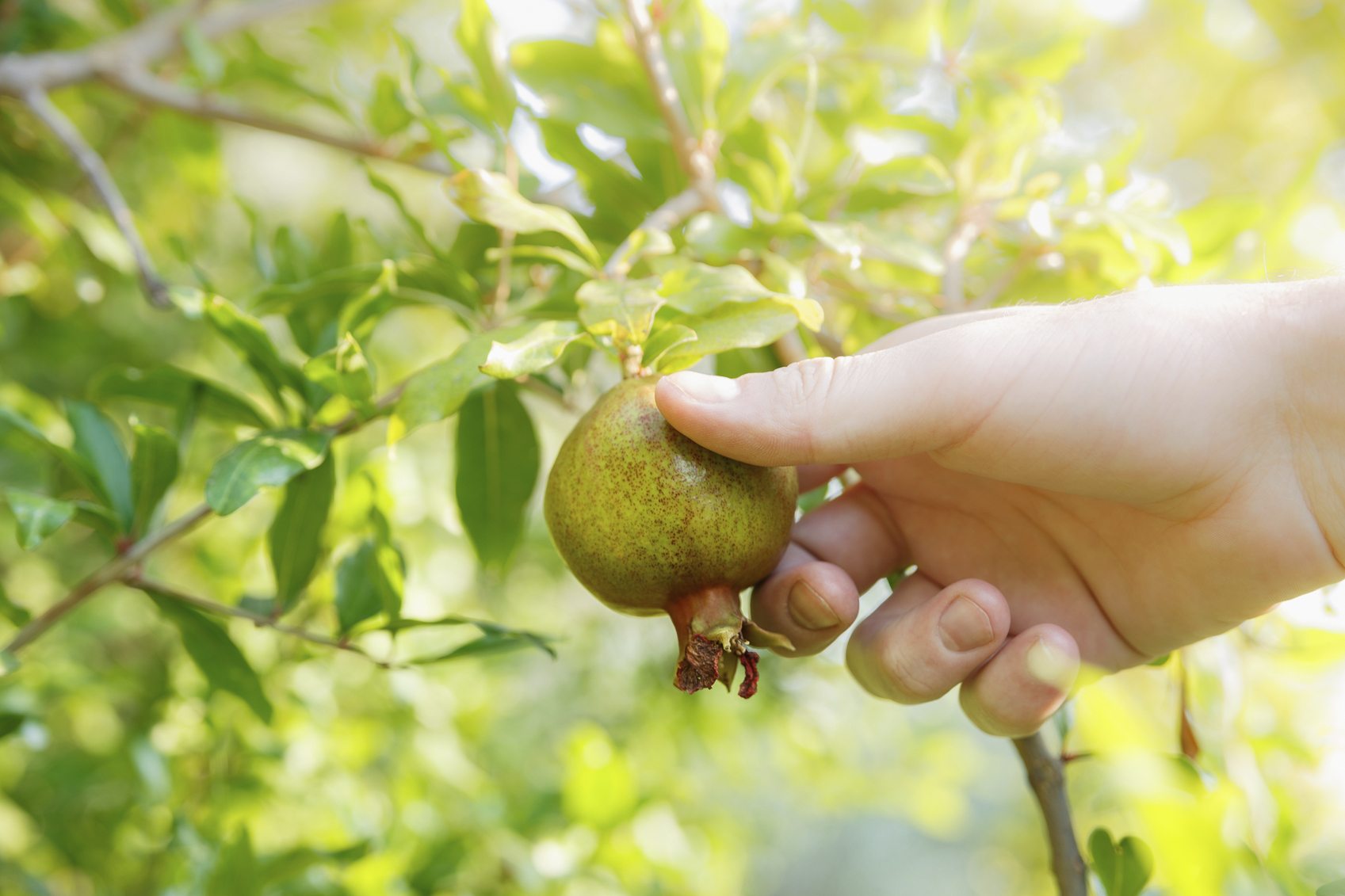Picking Pomegranates – Learn About Harvesting Pomegranate Fruit

Pomegranates used to be a rather exotic fruit, one that was imported and eaten on special occasions. Today, due to its designation as a “superfood,” pomegranates and their juice feature prominently in almost every local grocery. In fact, pomegranates have become so popular that many people in USDA zones 7 to 10 are trying their hand at growing and picking their own pomegranates. So how and when do you harvest pomegranates? Read on to learn more.
When to Harvest Pomegranates
Native from Iran to the Himalayas in northern India, pomegranates have been cultivated for centuries for their juicy arils. They are grown in mild temperate to subtropical climates in regions with cool winters and hot summers. Drought tolerant, the trees actually prefer a semi-arid climate, planted in deep, acidic loam with good drainage. Don’t expect to begin harvesting pomegranate fruit until three to four years after planting. Once the trees have reached that age of maturity, the fruit will ripen about six to seven months after flowering – generally making harvest season for pomegranates in September for early ripening varieties and continues through October for later ripening cultivars. When harvesting pomegranate fruit, pick when the fruit is fully ripe and a deep red in color since it does not continue to ripe post-harvest. Begin picking pomegranates when the fruit makes a metallic sound when you tap it with your finger.
How to Harvest Pomegranates
When you are ready to harvest, cut the fruit from the tree, don’t pull it off. Cut the fruit as close as possible to the branch, taking the stem with the fruit. Store pomegranates in the refrigerator for up to six or seven months, that is if you can wait that long to eat this delicious, nutritious fruit.
Sign up for the Gardening Know How newsletter today and receive a free copy of our e-book "How to Grow Delicious Tomatoes".

Amy Grant has been gardening for 30 years and writing for 15. A professional chef and caterer, Amy's area of expertise is culinary gardening.
